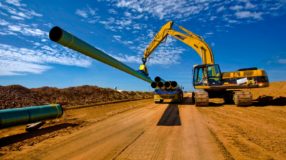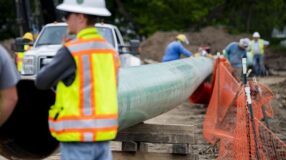
In recent years, the United States has taken a leadership role in clean energy, thanks to the marriage of low-cost natural gas and the deployments of renewable technologies like wind and solar. By expanding the infrastructure necessary to connect these resources to homes and businesses, America can continue to access abundant, safe, affordable energy, while continuing to combat climate change.
Natural gas and renewable energy are complementary resources, and they should remain critical partners in building our clean energy future. Research from the National Bureau of Economic Research, for example, found a correlation between the growth of natural gas for power generation and the increased deployment of renewable power. Lower natural gas prices help make power more affordable and reliable for consumers, and partnering with renewable energy lowers emissions and reduces the overall costs of electric power even further.
The cleaner and cheaper mix of natural gas and renewables is why the United States today is a climate leader. According to the U.S. Energy Information Administration, the transition to natural gas and renewables delivered a 33 percent reduction in CO2 emissions from electricity generation between 2005 and 2019, even while total U.S. electric generation increased. In fact, since 2000, no country in the world has reduced its CO2 emissions more than the United States.
This is important and measurable progress that we should build on as we continue to develop innovative technologies and policies that support further emissions reductions. But to do so, we need to strengthen our nation’s energy network by building a grid that is even cleaner, more resilient, and more affordable for consumers.
This was made apparent after the brutal February storms that caused widespread power outages in Texas. Despite some of the voices on social media who have tried to create a bogeyman, the solution is not a false choice between natural gas or renewables. Experts have concluded that we should make additional infrastructure investments, and lawmakers are currently considering additional grid improvements to address constraints identified in February. We should expand our power grid to bring cleaner, cheaper power to market so homes and businesses can keep the lights on — and expand pipeline capacity to help ensure ample natural gas supplies for both power generation and home heating, while also reducing the need for practices like flaring.
And despite what happened in February, Texas remains the example of how to do this. As we all know, the Lone Star State has abundant energy resources, and it encourages responsible production. Texas is the number one producer of both natural gas and wind-generated energy, accounting for 25 percent of U.S. natural gas production and 28 percent of all U.S. wind-powered electricity in 2019. If Texas were its own country, it would rank as the fifth largest wind-producer in the world. On top of that, it is the second largest solar market in the U.S. and is expected to surpass California for the lead by 2025.
This complementary mix of natural gas and renewables has delivered environmental and economic benefits. Over the last 30 years, per capita energy-related CO2 emissions in Texas declined by 28 percent, and Texas electricity prices are nearly 20 percent lower than the national average.
However, without a robust pipeline and transmission system, these benefits would never be realized. This is why Texas has nearly 470,000 miles of pipelines and the Competitive Renewable Energy Zone (CREZ) power lines, which have allowed the state’s abundant natural gas and renewable resources in places like West Texas and the Panhandle to be delivered to homes and businesses in the urban areas. CREZ saves consumers more than $1 billion on their power bills every year. Infrastructure makes markets and ensures reliability.
In Texas and across the country, we should invest in what works. The increasingly cleaner and affordable mix of natural gas and renewables has given the United States a leadership role in addressing climate change. By continuing to work together while expanding our energy infrastructure, we can solidify that position for decades to come.







